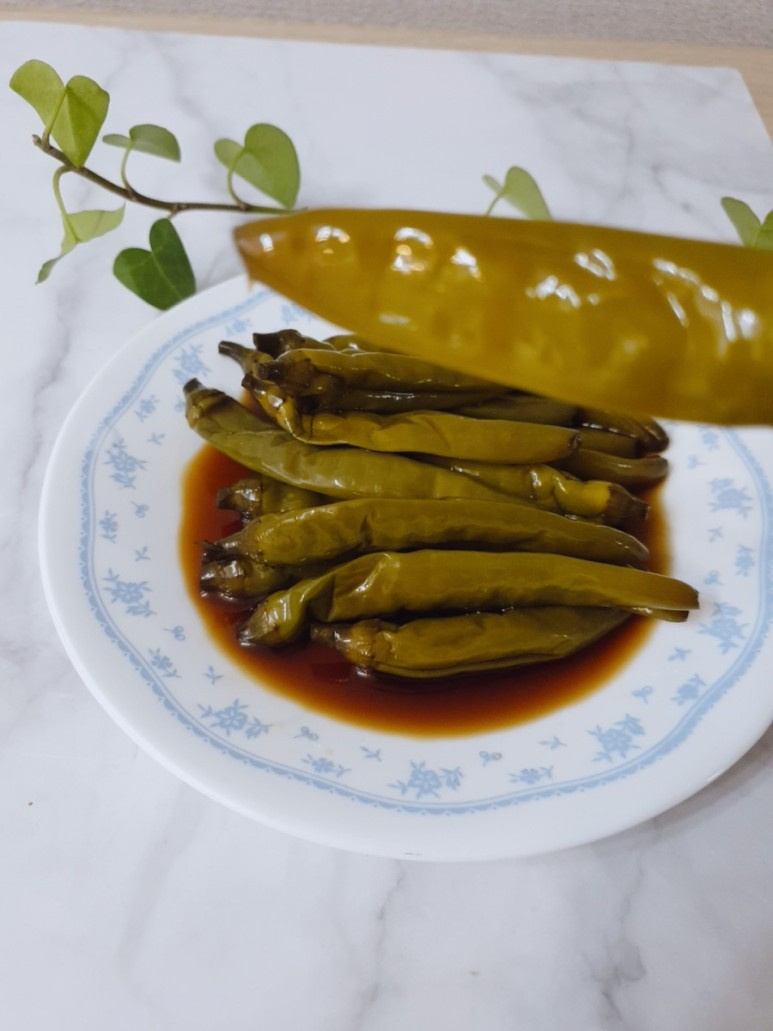Spicy & Sweet! Perfect Gochujang Jangajji (Pickled Peppers)
A Delectable Side Dish: How to Make Gochujang Jangajji with Cheongyang Peppers

As the season winds down, the perfect peppers for pickling become available! Make delicious jangajji with soy sauce and peppers. There’s nothing quite as satisfying as enjoying this with grilled meat. Today, I’m sharing my recipe for Gochujang Jangajji, a delightful pepper pickle steeped in a savory soy sauce mixture.
Jangajji Ingredients- 2 cups Jin-ganjang (Korean soy sauce for soup) (approx. 400ml)
- 2 cups Water (approx. 400ml)
- 1 cup Vinegar (approx. 200ml)
- 1 cup Sugar (approx. 200g)
- 1/2 cup Maesil Cheong (plum extract) (approx. 100ml)
- 1/3 cup Soju (Korean distilled spirit) (approx. 65ml)
Cooking Instructions
Step 1
First, prepare 2kg of fresh peppers. I’ll be making 1kg of soy sauce jangajji and the other 1kg into salt jangajji. Wash the peppers thoroughly under running water and then drain them completely in a colander. Next, trim off the top stem and the pointed end of each pepper. Trimming the ends like this is more convenient than piercing them with a toothpick or fork, as it allows the marinade to penetrate better and makes them easier to eat.

Step 2
As you can see in the photo, I’ve trimmed off both ends of the peppers. While you can skip this step if you prefer, trimming them results in a cleaner presentation and allows the marinade to be absorbed more effectively, leading to a tastier jangajji.

Step 3
Now, let’s make the key component for delicious jangajji: the brine. In a pot, combine 2 cups of Jin-ganjang, 2 cups of water, 1 cup of vinegar, and 1 cup of sugar. Mix them well. It’s important to bring this mixture to a rolling boil over high heat to ensure the sugar dissolves completely.

Step 4
While the brine is boiling, carefully place the prepared peppers into a clean storage container. Once the brine is boiling vigorously, turn off the heat. Then, stir in 1/2 cup of maesil cheong and 1/3 cup of soju. Soju helps to eliminate any unwanted odors and enhances preservation. Carefully pour this hot brine over the peppers in the container. After adding the brine, it’s crucial that the peppers don’t float to the surface. Place a pressing lid or plate on top of the peppers and weigh it down with something heavy. I used a heavy stone that I always use for pickling. This ensures the peppers stay submerged, preventing them from spoiling and allowing them to pickle perfectly.

Step 5
Let the Gochujang Jangajji sit at room temperature for about 5 days to ferment. As time passes, the soy sauce will infuse into the peppers, creating a delicious Gochujang Jangajji! Once ready, store the jangajji in the refrigerator and enjoy it as a fantastic side dish with grilled meats, bibimbap, or other favorite meals.



